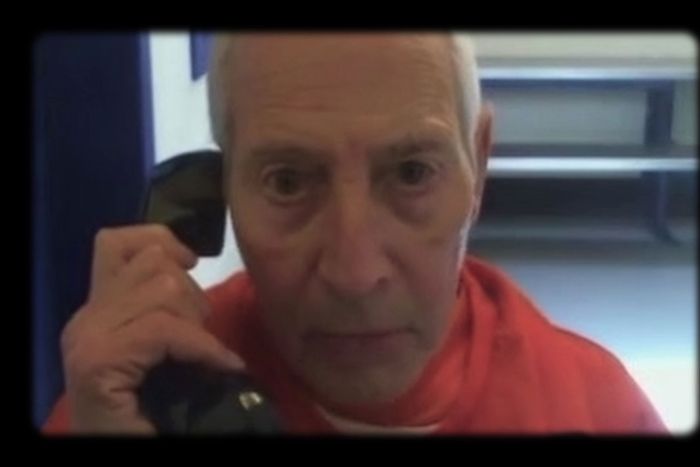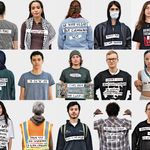
It’s been nine years since The Jinx: The Life and Deaths of Robert Durst, the Andrew Jarecki docuseries about the troubled real-estate heir, ended with what sounded like a murder confession. A day before the finale aired on April 15, 2015, Robert Durst was arrested in a New Orleans hotel lobby. He was convicted of the murder of his friend, Susan Berman, in 2021, and died in a prison hospital early the next year.
This, to many people, seemed like the end of the story. But Jarecki has been collecting footage and interviews of the events that The Jinx set in motion. The second season of the series, premiering on HBO April 21, will follow Durst’s imprisonment and trial, weaving together audio recordings of calls made from prison, trial footage, and interviews with Durst’s friends and confidants. If you need a refresher about who Robert Durst is, the murders he got away with, and how he finally got caught, here’s where to start:
Who is Robert Durst?
Robert, frequently called Bob, was the scion of one of the most prominent real-estate families in New York City. His grandfather, Joseph Durst, an Austrian tailor, arrived in the U.S. in 1902 with three dollars sewn into his lapel. He bought his first building, One W. 34th Street, 13 years later. The Dursts assembled and developed lots in Midtown East before shifting West into the Times Square area. Joseph’s son Seymour, Robert’s father, became president of the family business after Joseph died in 1974, running it with his brother, according to a 1995 obituary in the New York Times. Today, the family-run company manages and owns stakes in more than a dozen high-profile commercial and residential properties in New York, including One World Trade Center.
Robert was the oldest of Seymour Durst’s four children, and he was slated to take over the real-estate empire. But in December 1994, Robert’s younger sibling Douglas, then 50, took the reins instead, a process that required, according to the Times, revisions to “dozens of legal documents governing family trusts.” After being passed over for succession, Robert failed to show up at a family lunch, and afterwards, when the rest of the family returned to the office, they found that Robert had cleared out. In a 2015 interview with the Times, Douglas said that Robert had always seemed troubled and that the latter had tormented him throughout childhood. “I was always amazed that he had friends,” he told the paper, “because from what I saw, I didn’t see how anyone would see him as someone they wanted to be friendly with.” As an adult, Robert also began acting erratically at the family’s office — only coming in during odd hours, urinating in Douglas’s wastepaper basket. “In the early ’90s, he would start sitting at meetings and mumbling to himself,” Douglas said. He also claimed his brother used to keep a plumber’s wrench on his desk, leading Douglas to keep a pipe on his desk “for protection.”
What ultimately took him out as successor?
The incident that finally led to the change in succession, Douglas told the Times, was when Robert urinated in his uncle’s wastepaper basket —apparently, a graver offense than peeing in his brother’s (Douglas has said when he had complained about the pee earlier, family elders brushed it off). After the swap in 1994, Robert reportedly never came to the office again. In 2006, he accepted a $65 million payout for interest in the family trust, severing any remaining ties to the family business.
When was Robert first suspected of murder?
Durst was first arrested for murder in October 2001, after the death of Morris Black, Durst’s neighbor in a Galveston, Texas, rooming house. Black had been found shot and dismembered in 2001. The Jinx, part one, featured extensive interview footage with Robert, exploring his role in Black’s death and the deaths of two other people close to him: his wife, Kathleen Durst, who vanished in 1982 and whose body has never been found, and Susan Berman, his best friend, confidant, and defender, who was shot execution-style in her Los Angeles home in 2000. At the time the first season of The Jinx aired, Durst had only been charged with Black’s murder, which he’d been acquitted of, claiming self-defense. Durst had been living in the boardinghouse in the guise of a mute woman (and sometimes as a male friend of hers), and despite shooting Black, cutting up his body, dumping it in Galveston Bay, and jumping bail after his arrest, his lawyers convinced a jury that Durst had accidentally shot Black during a fight.
What have the Dursts said about the murders?
Before The Jinx aired in 2015, Douglas told the Times that he believed Robert was guilty of the murders. Douglas also said his brother had appeared at his Westchester home twice in recent years, once carrying two guns and another time in a ski mask. “There’s no doubt in my mind that if he had the opportunity to kill me, he would,” he said.
Did the Durst family participate in the documentary?
No. The Jinx’s director, Jarecki, who’d made an earlier, fictionalized movie, All Good Things, about Robert Durst’s life and Kathie’s disappearance, starring Ryan Gosling and Kirsten Dunst, has said that Robert Durst reached out afterwards, apparently liking how Jarecki had told his story. The rest of the Durst family declined to be interviewed for The Jinx; Douglas told the Times that he felt the truth had been distorted in All Good Things and did not trust the filmmakers — he was worried they would allow Robert’s fabrications to twist the documentary.
What happened at the end of the first season of The Jinx?
In the last episode of The Jinx, which aired on March 15, 2015, Jarecki presented Robert with a pivotal piece of evidence — an envelope containing an anonymous letter alerting police to the presence of Berman’s body in her Beverly Hills home. The handwriting was identical to Durst’s writing on another letter and included the same misspelling of “Beverly” as “Beverley.” Afterwards, a hot mic captured Durst in the bathroom saying the series’ famous last words: “There it is, you’re caught … What the hell did I do? Killed them all, of course.”
The day before the final episode aired, Durst was arrested and charged with murdering Susan Berman. Some saw the timing as suspect — it was certainly a boon for the series. But law-enforcement officials said they acted when they did because they believed Durst was preparing to flee the country.
As prosecutors successfully argued at his 2021 trial, Durst was afraid Berman was going to reveal the true details of Kathie Durst’s disappearance and death to investigators. He was convicted of Berman’s murder in 2021. That fall, a criminal complaint filed by an investigator in New York suggested he might also, finally, face charges in Kathleen Durst’s murder. But Durst, a frail 78, died in a prison hospital early the next year.
What will the next season cover?
The second part of The Jinx, which will be six episodes like the first, will cover the events leading up to the 2021 Berman murder trial, the trial itself, and its aftermath, according to the Financial Times. The trailer shows jailhouse recordings, trial footage, and interviews with friends and those involved with covering and investigating the case, including longtime New York Times real-estate reporter Charles Bagli. Jarecki told the FT that this season will focus on complicity: “How do you kill three people over 30 years and get away with it? As we got deeper into it, we realized it takes a village. We were not dealing with Bob Durst the lone wolf, because he was surrounded by all these people.”





